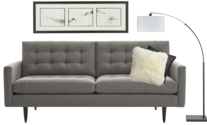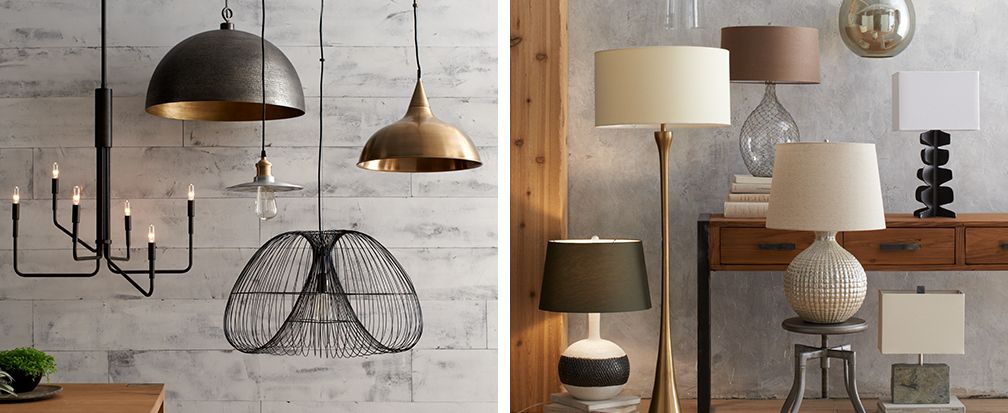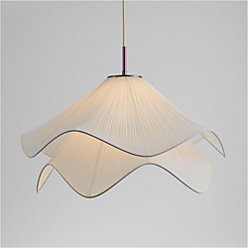Know what fixture is appropriate for each area of the room.
Pendant lights are best over tables and counters. Sconces are symmetrically placed, flanking a focal point such as a large mirror or mantle. Spotlights highlight art works and architectural details. Table and floor lamps help rooms that need to transition from one use to the next—such as home offices that double as bedrooms, or living rooms that go from reading rooms to entertaining areas. Lamps are the most versatile lighting fixture, and having a mix of light sources at different levels creates ambience and appropriate task lighting for a layered look.
TIP: Adding mirrors that reflect the light will make any space appear instantly larger.
Choose what mood you want to create in each space
In the living room, use a combination of table lamps and floor lamps to create a soothing effect. When lighting the dining room, make the table the brightest spot in the room with a large, attention-grabbing pendant. Go for a cozy feel when lighting the bedroom, with sconces on either side of the bed with tinted-low wattage bulbs to mimic candlelight. In the kitchen, the brighter, the better. In addition to recessed ceiling lighting and pendants over the kitchen island, a more casual pendant over the breakfast nook and sconces on either side of the doorway make sense too.
Take out your measuring tape before any decisions are made
Hanging lights and table lamps need to be the right dimensions in order to create a cohesive look. Kitchen pendants should clear the head of the tallest family member and not obstruct views. General rule is 36 to 48 inches from the top of the counter. Start the row of lights 12 to 15 inches from either end of the island or table and space them evenly within that span. The chandelier in the dining room should be hung 36-48 inches above the table. Choose the lower number for more intimacy. The fixture should be one-half to three-quarters the width of the table.
Make sure the shade is the right size and shape
A floor lamp shade’s diameter should be approximately ? the height of the lamp (it’s slope or shape is up to you). The base of a bedside lamp shade should be below your line of sight or 16 to 18 inches from the top of the mattress. This will provide the right amount of task lighting for reading in bed. For pendant lighting, add up the length and width of the room in feet and use the same number in inches for the diameter of the pendant shade. Or, for more adventurous designers, you can forget the rules and choose an oversize shade with a unique shape to create drama.

The best part about layering different types of lighting is the flexibility it gives the space in terms of function. One room can instantly serve multiple purposes, so homes with limited square footage can be maximized. If you’re in the planning stages of new home construction or have a renovation on the horizon, install dimmers on all the light switches. When each day is nearing its end, dim the overhead lighting, switch on the table lamps, pendants and sconces throughout the space, and enjoy the sudden lift of stress as the sun sets.
What are your favorite home lighting ideas? Share them with us by using the hashtag #CrateStyle.











